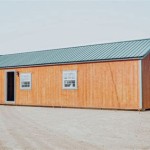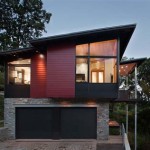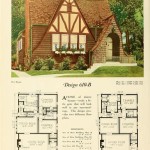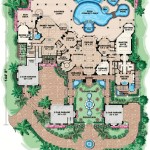Tiny house floor plans with one bedroom are home designs that prioritize space efficiency and affordability. These plans generally encompass a small living area, a compact kitchen, and a single bedroom, with the goal of providing essential living space in a minimalist footprint.
Tiny houses are often built on trailers or mobile platforms, making them portable and ideal for individuals seeking a flexible and cost-effective housing solution. They can serve as primary residences, vacation homes, or guest accommodations.
In the following sections, we will explore various tiny house floor plans with one bedroom, discussing their key features, space considerations, and design strategies to maximize comfort and functionality within a limited space.
Consider the following nine key points when designing or selecting tiny house floor plans with one bedroom:
- Maximize vertical space
- Incorporate storage solutions
- Prioritize multi-functional furniture
- Use natural light effectively
- Choose space-saving appliances
- Plan for efficient traffic flow
- Consider outdoor living spaces
- Factor in energy efficiency
- Customize to personal needs
By carefully considering these points, you can create a comfortable and functional tiny house floor plan with one bedroom that meets your specific lifestyle and space requirements.
Maximize vertical space
In tiny house floor plans with one bedroom, maximizing vertical space is crucial to create a sense of spaciousness and functionality. Here are several strategies to achieve this:
Loft bedrooms: Building a loft bedroom is an excellent way to add an extra sleeping space without sacrificing valuable floor area. Loft bedrooms can be accessed via a ladder or stairs and often feature windows or skylights to provide natural light and ventilation.
Vertical storage: Utilize vertical space for storage by installing shelves, cabinets, and drawers that extend upwards. Wall-mounted shelves and organizers can also help keep clutter off the floor and maximize horizontal space.
Stackable furniture: Opt for furniture that can be stacked or folded away when not in use. Stackable chairs, nesting tables, and ottomans can save space and provide flexibility in furniture arrangements.
Multi-level designs: Consider incorporating multi-level designs into your floor plan. This could involve creating a raised platform for a sleeping area or a sunken living room, which can help define different spaces and enhance the overall sense of space.
Incorporate storage solutions
Incorporating smart and efficient storage solutions is crucial for maximizing space and maintaining organization in tiny house floor plans with one bedroom. Here are some innovative ideas to consider:
- Utilize vertical space: Install shelves, cabinets, and drawers that extend upwards to make the most of vertical space. Wall-mounted shelves and organizers can also help keep clutter off the floor and maximize horizontal space.
- Create hidden storage: Build hidden storage compartments beneath stairs, inside benches, or within the walls to store bulky items or seasonal belongings. These hidden spaces can help keep the living area clutter-free and organized.
- Multi-purpose furniture: Opt for furniture that serves multiple functions. Ottomans with built-in storage, beds with drawers, and tables with hidden compartments can provide ample storage without taking up additional floor space.
- Under-bed storage: Utilize the space beneath the bed for storage by using rolling bins, under-bed drawers, or platform beds with built-in storage compartments. This is a great way to store items that are not frequently used or seasonal belongings.
By incorporating these storage solutions into your tiny house floor plan, you can create a functional and organized living space that maximizes every inch of available area.
Prioritize multi-functional furniture
In tiny house floor plans with one bedroom, prioritizing multi-functional furniture is essential to maximize space and create a comfortable and practical living environment. By choosing furniture that serves multiple purposes, you can save valuable floor area and maintain a clutter-free and organized space.
- Sofa bed: A sofa bed is a versatile piece of furniture that can serve as both a couch and a bed. This is a great option for tiny houses as it eliminates the need for a separate bed frame and mattress, saving valuable floor space. Choose a sofa bed with a comfortable mattress to ensure a good night’s sleep.
- Ottoman with storage: An ottoman with built-in storage is another excellent multi-functional furniture option. It can be used as a footrest, a coffee table, or extra seating when needed. The storage compartment can be utilized to store blankets, pillows, or other items, helping to keep the living area organized and clutter-free.
- Table with hidden compartments: A table with hidden compartments can provide additional storage space without taking up extra floor area. These compartments can be used to store items such as board games, books, or other household items, keeping them out of sight and within easy reach.
- Wall-mounted furniture: Wall-mounted furniture, such as shelves, desks, and cabinets, can help free up floor space and create a more spacious feel. Wall-mounted shelves can be used to display books, plants, or other decorative items, while wall-mounted desks and cabinets can provide additional work or storage space without encroaching on the limited floor area.
By incorporating multi-functional furniture into your tiny house floor plan, you can create a comfortable, practical, and space-efficient living space that meets your needs and lifestyle.
Use natural light effectively
In tiny house floor plans with one bedroom, maximizing natural light is crucial to create a bright and inviting living space. Natural light not only reduces the need for artificial lighting, saving energy, but also improves overall well-being and mood. Here are several ways to incorporate natural light effectively into your tiny house design:
- Windows and skylights: Place windows and skylights strategically throughout your tiny house to allow ample natural light to enter. Consider installing large windows in the living area and bedroom to maximize light exposure. Skylights can also be a great way to bring in natural light to areas that may not have access to windows, such as bathrooms or lofts.
- Light-colored walls and ceilings: Light-colored walls and ceilings reflect and amplify natural light, making the space feel larger and brighter. Choose light shades of paint or wallpaper for your walls and ceilings to maximize the effect of natural light.
- Mirrors: Mirrors can be used to reflect and distribute natural light throughout the tiny house. Place mirrors opposite windows or skylights to bounce light into darker areas or to create the illusion of a larger space.
- Avoid heavy curtains: Heavy curtains can block out natural light. Opt for sheer curtains, blinds, or window shades that allow light to filter through while still providing privacy when needed.
By incorporating these strategies into your tiny house floor plan, you can create a bright, airy, and welcoming space that takes full advantage of natural light.
Choose space-saving appliances
In tiny house floor plans with one bedroom, choosing space-saving appliances is essential to maximize living space and maintain functionality. Standard-sized appliances can occupy valuable floor area, making it challenging to navigate and utilize the space effectively. By opting for space-saving appliances, you can create a more efficient and comfortable living environment without compromising on functionality.
One of the most important space-saving appliances to consider is a compact refrigerator. Traditional refrigerators can take up a significant amount of floor space, especially in a tiny house with limited square footage. Compact refrigerators, on the other hand, are designed to fit into smaller spaces while still providing ample storage for food and beverages. Look for models with adjustable shelves and compartments to maximize storage capacity and organization.
Another space-saving appliance to consider is a stackable washer and dryer. Stackable units are designed to be placed on top of each other, saving valuable floor space compared to traditional side-by-side units. Stackable washer and dryer units are available in both compact and full-size capacities, allowing you to choose the size that best meets your needs and space constraints.
In addition to major appliances, consider choosing space-saving alternatives for smaller appliances as well. For example, a microwave oven with a built-in exhaust fan can eliminate the need for a separate range hood, saving space above the stovetop. Similarly, a toaster oven can replace a traditional toaster and oven, providing multiple cooking functions in a compact size.
By carefully selecting space-saving appliances, you can create a functional and comfortable tiny house floor plan with one bedroom that maximizes space utilization and enhances overall livability.
Plan for efficient traffic flow
In tiny house floor plans with one bedroom, planning for efficient traffic flow is crucial to ensure a comfortable and functional living space. Careful consideration should be given to the placement of furniture, appliances, and other objects to minimize obstacles and maximize the feeling of spaciousness. Here are some key points to consider when planning for efficient traffic flow:
- Create clear pathways: Ensure that there are clear pathways throughout the tiny house, allowing for easy movement between different areas. Avoid placing furniture or obstacles in the middle of walkways, and make sure that doorways and hallways are wide enough for comfortable passage.
- Utilize vertical space: Vertical space can be utilized to create additional storage and living space without cluttering the floor. Consider building shelves, cabinets, or lofts to store items and free up floor space for movement.
- Consider furniture placement: When placing furniture, think about how it will affect traffic flow. Avoid blocking doorways or walkways, and position furniture in a way that allows for easy movement around the room.
- Use multi-purpose furniture: Multi-purpose furniture can help save space and improve traffic flow. For example, a coffee table with built-in storage can eliminate the need for a separate storage unit, and a sofa bed can serve as both a couch and a bed.
By considering these points and carefully planning for efficient traffic flow, you can create a tiny house floor plan with one bedroom that is both comfortable and functional, maximizing the available space and enhancing the overall livability.
Consider outdoor living spaces
Incorporating outdoor living spaces into tiny house floor plans with one bedroom can significantly enhance the overall livability and functionality of the home. By extending the living space outdoors, you can create a seamless connection between the interior and exterior, providing additional space for relaxation, entertainment, and storage.
- Create a deck or patio: A deck or patio provides an outdoor extension of the living space, perfect for dining, relaxing, or entertaining guests. Choose decking materials that are durable and weather-resistant to ensure longevity and low maintenance.
- Utilize vertical space: Vertical space can be utilized outdoors as well. Consider installing shelves, planters, or trellises on walls or fences to create additional storage or display space for plants and other items.
- Incorporate outdoor storage: Outdoor storage can be essential for storing gardening tools, grilling equipment, or other bulky items. Build shelves, cabinets, or a shed to keep your outdoor belongings organized and protected from the elements.
- Plan for privacy: If your outdoor living space is overlooked by neighbors or passersby, consider adding privacy screens, fences, or hedges to create a more secluded and intimate setting.
By incorporating these elements into your tiny house floor plan, you can create a well-rounded and functional living space that seamlessly blends indoor and outdoor living, enhancing your overall enjoyment and quality of life.
Factor in energy efficiency
Incorporating energy-efficient features into tiny house floor plans with one bedroom is crucial to reduce energy consumption, lower utility bills, and minimize the environmental impact. By implementing sustainable design strategies, you can create a tiny house that is both comfortable and eco-friendly.
One key aspect of energy efficiency is insulation. Proper insulation helps maintain a comfortable indoor temperature by preventing heat loss in winter and heat gain in summer. Consider using high-quality insulation materials in walls, ceilings, and floors to minimize heat transfer and reduce energy usage for heating and cooling.
Windows and doors are another important factor to consider. Choose energy-efficient windows with double or triple glazing and low-emissivity (Low-E) coatings. These features help reduce heat transfer and improve insulation, resulting in lower energy consumption for heating and cooling.
Additionally, consider incorporating passive solar design principles into your tiny house floor plan. Orient the house to maximize solar exposure, and design the layout to allow natural light to penetrate deep into the living space. This can help reduce the need for artificial lighting and heating during the day, resulting in energy savings.
By carefully considering these energy-efficient features, you can create a tiny house floor plan with one bedroom that minimizes energy consumption, promotes sustainability, and provides a comfortable and healthy living environment.
Customize to personal needs
Customizing your tiny house floor plan to meet your specific needs is crucial to creating a truly comfortable and functional living space. Consider the following factors when personalizing your floor plan:
Lifestyle and habits: Think about how you live on a daily basis and tailor your floor plan to match your lifestyle. For example, if you work from home, incorporate a dedicated workspace into your design. If you enjoy cooking, plan for a well-equipped kitchen with ample counter space.
Hobbies and interests: Your hobbies and interests can also influence your floor plan. If you enjoy gardening, consider adding a small outdoor space or incorporating a gardening area into your design. If you’re an avid reader, plan for a cozy reading nook or a built-in bookshelf.
Storage needs: Carefully assess your storage needs and plan for adequate storage solutions. Consider your clothing, belongings, and any specialized equipment you may need to store. Utilize vertical space with shelves and cabinets, and incorporate hidden storage compartments to maximize space utilization.
Future plans: Consider your future plans and how they may impact your tiny house. If you plan on expanding your family or hosting guests frequently, design your floor plan with flexibility in mind. Incorporate convertible spaces or multi-purpose furniture that can adapt to changing needs.
By carefully considering your personal needs and preferences, you can create a tiny house floor plan with one bedroom that is tailored to your unique lifestyle and aspirations, ensuring a comfortable and fulfilling living experience.










Related Posts








